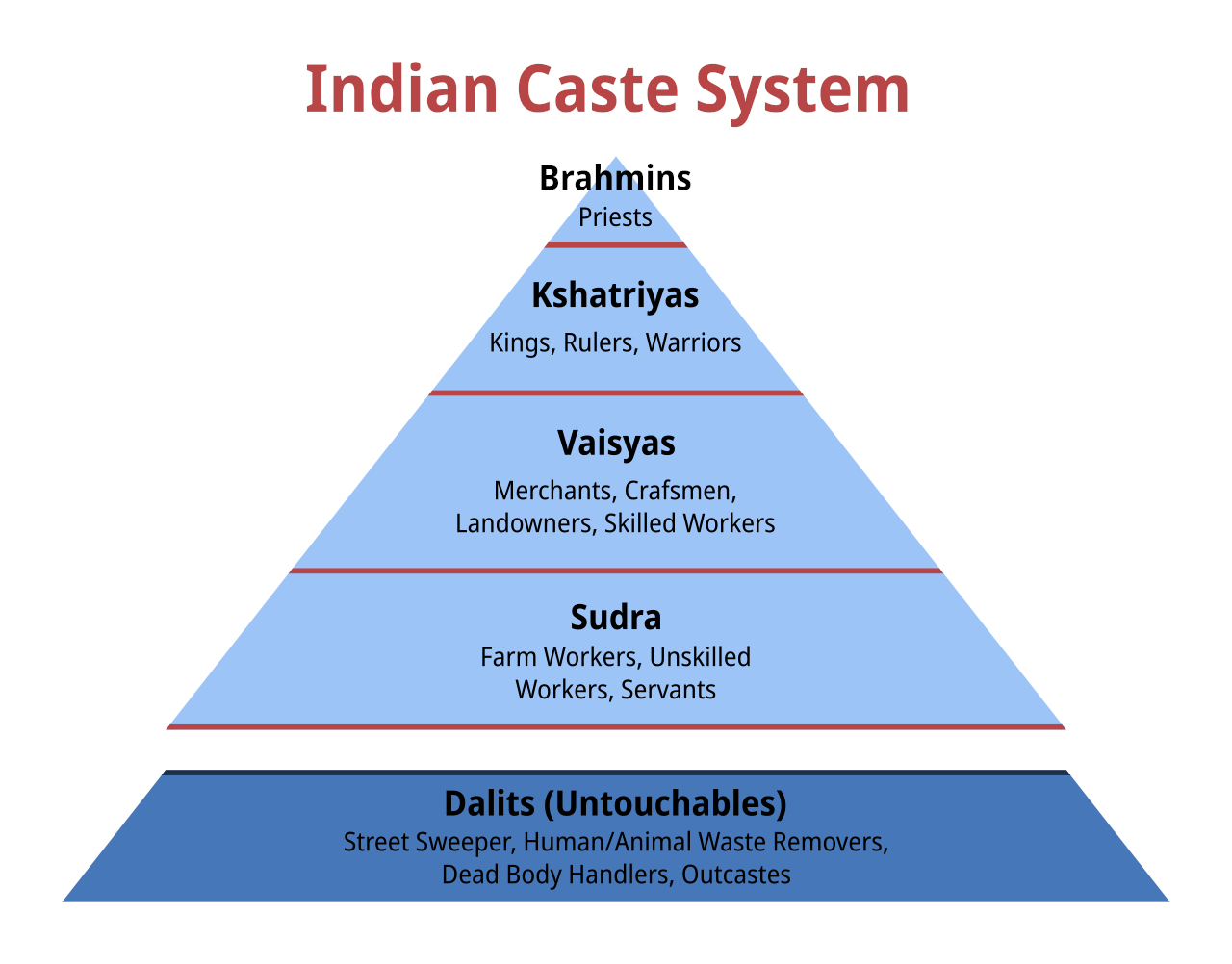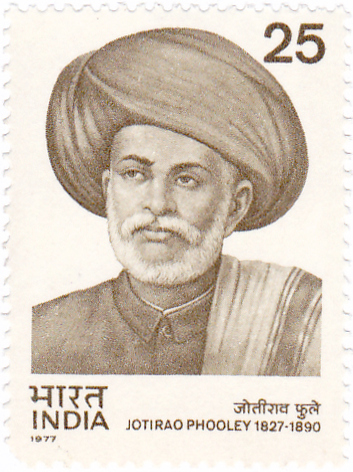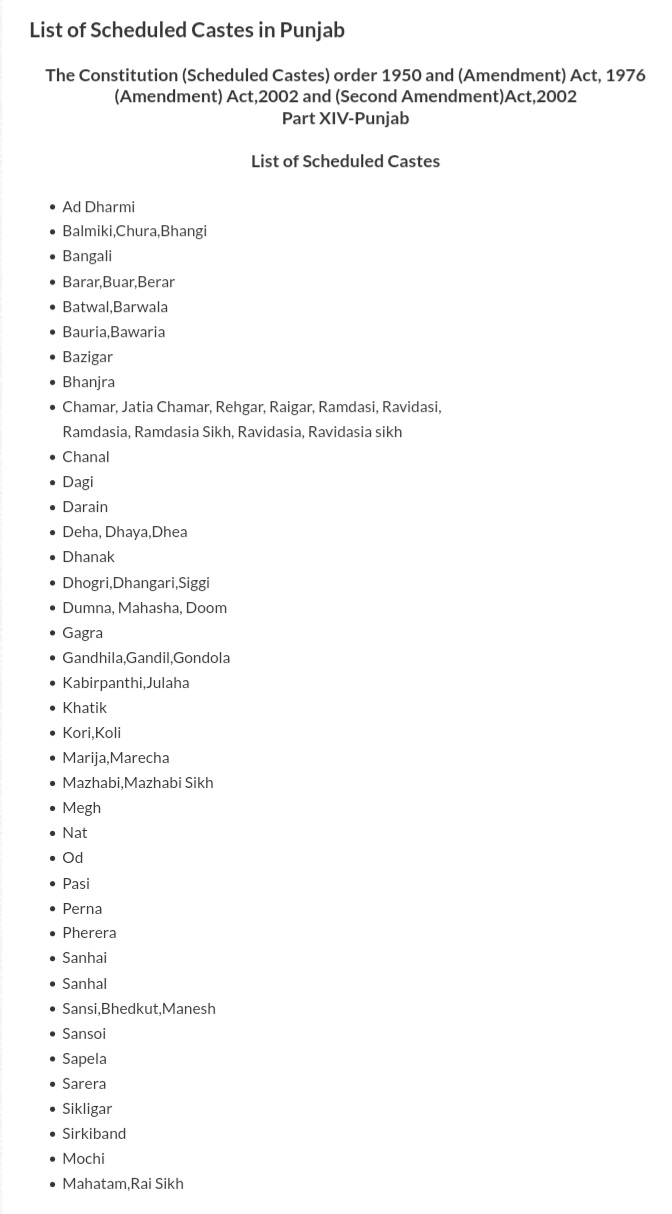|
Harichand Thakur
Harichand Thakur (11 March 1812 – 5 March 1878), was a social reformer who worked among the untouchable people of the Bengal Presidency. He founded the Matua sect of Hinduism. Life Harichand Thakur was born into a Vaishnavite Namashudra peasant family in 1811 in Safaladanga, a village in Gopalgunj, then part of the Bengal Presidency (now a part of Bangladesh). He was the son of Jashomanta Biswas (father) and Annapurna Devi (mother). His family, for generations, had belonged to the Gaudiya Vaishnavism sect; according to the book "Sri Sri Hari Lilamrita", his ancestors came from Rarhdesh. His grandfather, Manchanram Biswas, was a devout Vaishnavite known as 'Thakur Manchanram' in the locality. His father Jashomanta inherited the 'Thakur' title, and the family adopted the surname 'Thakur', abandoning their original surname 'Biswas'. Harichand Thakur was married to Jagat Mata Shanti Mata, and they had two sons. He was evicted from his native village Orakandi through the mac ... [...More Info...] [...Related Items...] OR: [Wikipedia] [Google] [Baidu] |
Gopalganj, Bangladesh
Gopalganj is a city in Gopalganj District in the Dhaka Division of Bangladesh. Spanning an area of 6.5 sq mi (16.9 km2), the city serves as the headquarters of Gopalganj District and Gopalganj Sadar Upazila. Demographics At the 2011 census, Gopalganj Municipality had 11,600 households and a population of 51,346. 10,445 (20.34%) were under 10 years of age. Gopalganj had a sex ratio of 947 females per 1,000 males and a literacy rate of 78.62%. References External linksGopalganj– ''Banglapedia ''Banglapedia:'' ''the'' ''National Encyclopedia of Bangladesh'' is the first Bangladeshi encyclopedia. It is available in print, CD-ROM format and online, in both Bengali and English. The print version comprises fourteen 500-page volumes. The ...'' Gopalganj District, Bangladesh {{Dhaka-geo-stub ... [...More Info...] [...Related Items...] OR: [Wikipedia] [Google] [Baidu] |
Vaishnavite
Vaishnavism () ), also called Vishnuism, is one of the major Hindu denominations, Hindu traditions, that considers Vishnu as the sole Para Brahman, supreme being leading all other Hindu deities, that is, ''Mahavishnu''. It is one of the major Hindu denominations along with Shaivism, Shaktism, and Smartism. Its followers are called Vaishnavites or ''Vaishnava''s (), and it includes sub-sects like Krishnaism and Ramanandi Sampradaya, Ramaism, which consider Krishna and Rama as the supreme beings respectively. According to a 2020 estimate by The World Religion Database (WRD), hosted at Boston University’s Institute on Culture, Religion and World Affairs (CURA), Vaishnavism is the largest Hindu sect, constituting about 399 million Hindus. The ancient emergence of Vaishnavism is unclear, and broadly hypothesized as a History of Hinduism, fusion of various regional non-Vedic religions with worship of Vishnu. It is considered a merger of several popular non-Vedic theistic traditio ... [...More Info...] [...Related Items...] OR: [Wikipedia] [Google] [Baidu] |
Matua (priest)
Matua (baptized Maria Tepano or Marie-Etienne; fl. 1838) was the High Priest (''taura tupua'') of the island of Mangareva. He served as one of the regents for his nephew Maputeoa and was instrumental in the conversion of Mangareva and the Gambier Islands to Roman Catholicism. His name is often written as Matoua. Biography Matua was the son of Terehi-kura and Mapurure (also known as Te Mateoa), the List of monarchs of Mangareva, King or ''ʻAkariki'' (paramount chief) of Mangareva, who was known to be alive in 1825 and said to have died in 1830 or 1832. Because his elder brother Te Ikatohara was killed by sharks in about 1824, his son and Matua's nephew Maputeoa became king after Mapurure's death. Matua served as regent during the minority of his nephew and enjoyed the full trust of his people and may have had intentions of usurping power. As ''ʻakariki'' (paramount chief), the young king Maputeoa had complete authority over the kingdom, excepting his four uncles, who jointly owned ... [...More Info...] [...Related Items...] OR: [Wikipedia] [Google] [Baidu] |
Thakur (title)
Thakur is a historical Indian feudalism, feudal Indian honorifics, title of the Indian subcontinent. It is also used as a surname in the present day. The female variant of the title is Thakurani or Thakurain, and is also used to describe the wife of a Thakur. There are varying opinions among scholars about its origin. Some scholars suggest that it is not mentioned in the Sanskrit texts preceding 500 Common Era, BCE, but speculates that it might have been a part of the vocabulary of the dialects spoken in North India, northern India before the Gupta Empire. It is viewed to have been derived from word ''Thakkura'' which, according to several scholars, was not an original word of the Sanskrit Languages of India, language but a borrowed word in the Indian lexis from the Tukharistan region of Uzbekistan. Another view-point is that ''Thakkura'' is a loan word from the Prakrit language. Scholars have suggested differing meanings for the word, i.e. "god", "lord", and "master of the es ... [...More Info...] [...Related Items...] OR: [Wikipedia] [Google] [Baidu] |
Dalit
Dalit ( from meaning "broken/scattered") is a term used for untouchables and outcasts, who represented the lowest stratum of the castes in the Indian subcontinent. They are also called Harijans. Dalits were excluded from the fourfold varna of the caste hierarchy and were seen as forming a fifth varna, also known by the name of ''Panchama''. Several scholars have drawn parallels between Dalits and the '' Burakumin'' of Japan, the '' Baekjeong'' of Korea and the peasant class of the medieval European feudal system. Dalits predominantly follow Hinduism with significant populations following Buddhism, Sikhism, Christianity, and Islam. The constitution of India includes Dalits as one of the Scheduled Castes; this gives Dalits the right to protection, positive discrimination (known as reservation in India), and official development resources. Terminology The term ''Dalit'' is for those called the "untouchables" and others that were outside of the traditional Hindu caste ... [...More Info...] [...Related Items...] OR: [Wikipedia] [Google] [Baidu] |
Sanskritisation
Sanskritisation (or Sanskritization) is a term in sociology which refers to the process by which castes or tribes placed lower in the caste hierarchy seek upward mobility by emulating the rituals and practices of the dominant castes or upper castes. It is a process similar to "passing" in sociological terms. This term was made popular by Indian sociologist M. N. Srinivas in the 1950s. Sanskritisation has in particular been observed among mid-ranked members of caste-based social hierarchies. In a broader sense, also called Brahmanisation, it is a historical process in which local Indian religious traditions become syncretised, or aligned to and absorbed within the Brahmanical religion, resulting in the pan-Indian religion of Hinduism. Definition Srinivas defined ''Sanskritisation'' as a process by which In a broader sense, Sanskritisation is In this process, local traditions (little traditions) become integrated into the great tradition of Brahmanical religion, disse ... [...More Info...] [...Related Items...] OR: [Wikipedia] [Google] [Baidu] |
Avarna
Varna (, ), in the context of Hinduism, refers to a social class within a hierarchical traditional Hindu society. The ideology of varna is epitomized in texts like ''Manusmriti'', which describes and ranks four varnas, and prescribes their occupations, requirements and duties, or ''Dharma''. *Brahmins: Vedic scholars, priests or teachers. *Kshatriyas: Rulers, administrators or warriors. *Vaishyas: Agriculturalists, farmers or merchants. *Shudras: Artisans, labourers or servants. This quadruple division is a form of social stratification, quite different from the more nuanced system of ''Jātis'', which correspond to the term "caste". The varna system is discussed in Hindu texts, and understood as idealised human callings. The concept is generally traced back to the '' Purusha Sukta'' verse of the Rigveda. In the post-Vedic period, the varna division is described in the ''Mahabharata,'' ''Puranas'' and in the '' Dharmashastra literatures''. The commentary on the Varna system i ... [...More Info...] [...Related Items...] OR: [Wikipedia] [Google] [Baidu] |
Teli
Teli is a caste traditionally occupied in the oil pressing and trade in India, Nepal, and Pakistan. Members may be either Hindu or Muslim; Muslim Teli are called Roshandaar or Teli Malik. India's Prime minister Narendra Modi is from Teli caste. They are included in OBC category list by the Central government but the higher sub castes within Teli such as Telik Vaishya and Tili are considered as Forward castes. History In the Early Mediaeval period in some parts of South India, the Teli community used to work on their own oil presses to produce oil to be supplied to the temples. The emergence of "Temple towns" in various parts of south India was instrumental in the improvement of social status of some of the communities that were associated with the supply of essential items for cultural activities. The communities like ''Malakar'' (garland makers) and ''Telikars'' (oil pressers) thus became important for the functioning of such towns. Some of them even became prosperous eno ... [...More Info...] [...Related Items...] OR: [Wikipedia] [Google] [Baidu] |
Mali Caste
The Mali are an occupational caste found among the Hindus who traditionally worked as gardeners and florists. They also call themselves Phul Mali due to their occupation of growing flowers. The Mali are found throughout North India, East India as well as the Terai region of Nepal and Maharashtra. Iravati Karve, an anthropologist, showed how the Maratha caste was generated from Kunbis who simply started calling themselves "Maratha". She states that Maratha, Kunbi and Mali are the three main farming communities of Maharashtra – the difference being that the Marathas and Kunbis were "dry farmers" whereas the Mali farmed throughout the year. Mali of Northern india In Rajasthan, caste based outfits of Mali caste, like 'Mahatama Phule Brigade', which caters to various needs of community associates them with Kushwaha caste. It is consented that Maurya, Kushwaha, Shakya, Saini are the different terms used to describe same community in various parts of North India. Malis of Rajasthan ... [...More Info...] [...Related Items...] OR: [Wikipedia] [Google] [Baidu] |
Chamar
Chamar (or Jatav) is a community classified as a Scheduled Caste under modern India's Reservation in India, system of affirmative action that originated from the group of trade persons who were involved in leather tanning and shoemaking. They are found throughout the Indian subcontinent, mainly in the northern states of India and in Pakistan and Nepal. History The Chamars are traditionally associated with leather work. Ramnarayan Rawat posits that the association of the Chamar community with a traditional occupation of tanning (leather), tanning was constructed, and that the Chamars were instead historically agriculturists. The term ''chamar'' is used as a pejorative word for Dalits in general. It has been described as a Casteism, casteist slur by the Supreme Court of India and the use of the term to address a person as a violation of the Scheduled Caste and Scheduled Tribe (Prevention of Atrocities) Act, 1989. Movement for upward social mobility Between the 1830s and the ... [...More Info...] [...Related Items...] OR: [Wikipedia] [Google] [Baidu] |
Krishna
Krishna (; Sanskrit language, Sanskrit: कृष्ण, ) is a major deity in Hinduism. He is worshipped as the eighth avatar of Vishnu and also as the Supreme God (Hinduism), Supreme God in his own right. He is the god of protection, compassion, tenderness, and love; and is widely revered among Hindu divinities. Krishna's birthday is celebrated every year by Hindus on Krishna Janmashtami according to the lunisolar calendar, lunisolar Hindu calendar, which falls in late August or early September of the Gregorian calendar. The anecdotes and narratives of Krishna's life are generally titled as ''Krishna Līlā''. He is a central figure in the ''Mahabharata'', the ''Bhagavata Purana'', the ''Brahma Vaivarta Purana,'' and the ''Bhagavad Gita'', and is mentioned in many Hindu philosophy, Hindu philosophical, Hindu theology, theological, and Hindu mythology, mythological texts. They portray him in various perspectives: as a god-child, a prankster, a model lover, a divine hero, ... [...More Info...] [...Related Items...] OR: [Wikipedia] [Google] [Baidu] |





